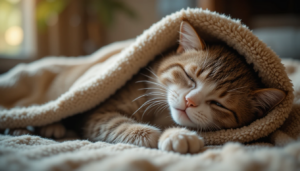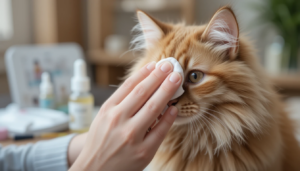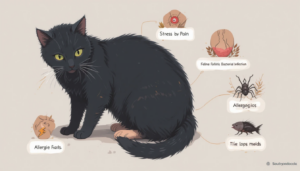Hydrangeas are a garden favorite, but if you’re a cat parent, they can be more trouble than beauty.
While their big, colorful blooms brighten up any space, these plants carry a hidden danger for our feline companions. Even a small nibble can lead to serious health issues. If you have a cat at home and hydrangeas in your garden or vase, this guide is for you.
Why Hydrangeas Can Be Dangerous for Cats
Hydrangeas contain a natural compound called cyanogenic glycoside. When your cat chews or swallows any part of the plant—especially the flowers—this compound breaks down and can release cyanide into their system.
Even though the amount of toxin released depends on the species and how much your cat eats, no amount is truly safe. All 75+ varieties of hydrangeas contain this toxin. Among them, Bigleaf hydrangea (Hydrangea macrophylla) is especially harmful because its flowers contain higher concentrations of the toxin.
Symptoms of Hydrangea Poisoning in Cats
If your curious kitty has had a taste of this plant, be on the lookout for the following signs:
- Vomiting
- Diarrhea
- Lethargy or unusual tiredness
- Loss of appetite
- Drooling
- Breathing difficulties
- Seizures
- Pale or bluish gums
- Rapid heartbeat
These symptoms can appear quickly and worsen fast, so early action can make all the difference.
What to Do If Your Cat Eats a Hydrangea
First, stay calm—but act fast.
- Remove your cat from the plant immediately to prevent further ingestion.
- Call your vet and explain what happened.
- Don’t try to make your cat vomit at home unless your vet tells you to. It can be more dangerous.
- If advised to go to the clinic, take a sample of the plant with you to help the vet identify it.
There’s no specific antidote to hydrangea poisoning, but vets may use activated charcoal, IV fluids, or other supportive treatments to help your cat recover.
How to Keep Your Cat Safe from Hydrangeas
As much as we love their beauty, hydrangeas and cats simply don’t mix. Here’s how you can keep your kitty safe:
- Avoid planting hydrangeas in areas where your cat plays or roams.
- Keep indoor hydrangeas out of reach, like on high shelves or inside closed-off rooms.
- Consider cat-safe plants instead. There are plenty of beautiful, non-toxic options to choose from.
- If your cat enjoys the outdoors, train them for safe, supervised outdoor time using a leash or a catio.
- Always research plants before bringing them home.
For a trusted list of safe and unsafe plants, visit the ASPCA’s Plant Database.
Final Thoughts: A Little Caution Saves a Lot of Heartache
Our furry friends explore the world with their noses—and often their mouths. As cat parents, it’s our job to make their world as safe and joyful as possible. While hydrangeas may be lovely to look at, the risk they pose to your cat isn’t worth it.
If you ever suspect your pet has eaten something toxic, don’t wait—call your vet immediately. Their health and happiness are in your hands, and every moment counts.




